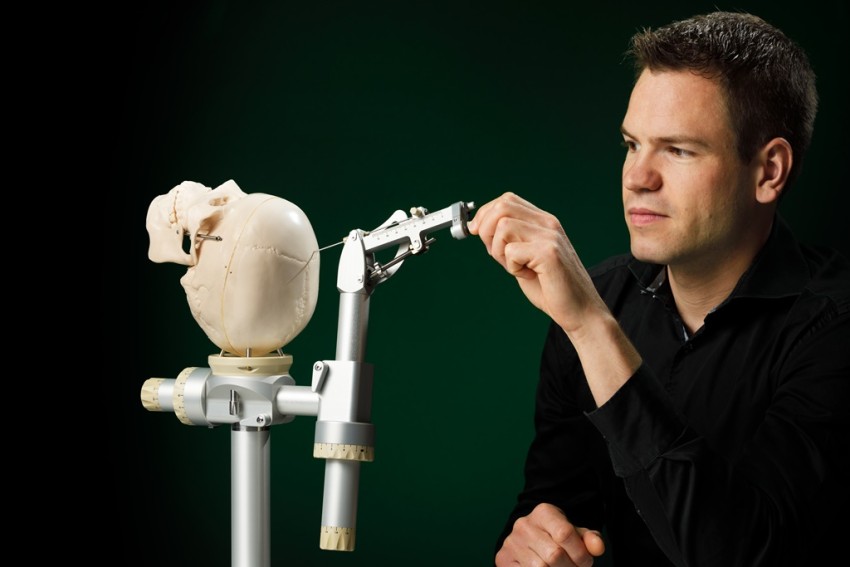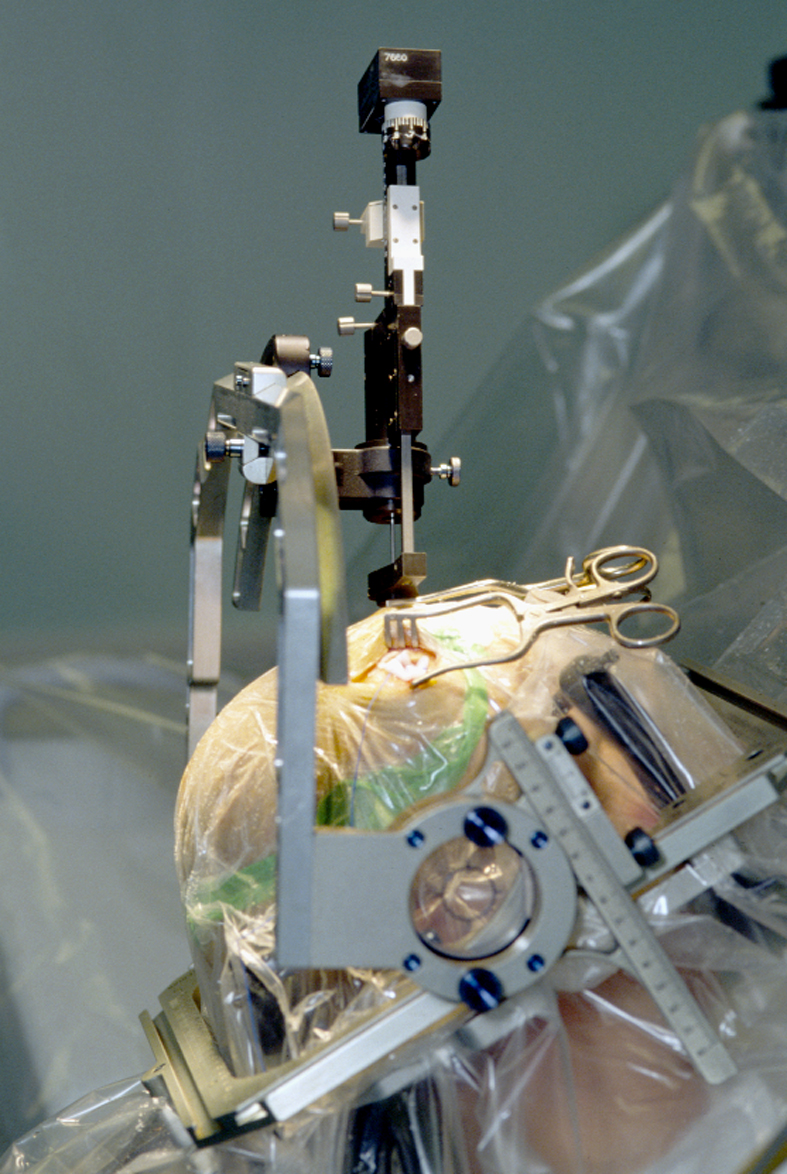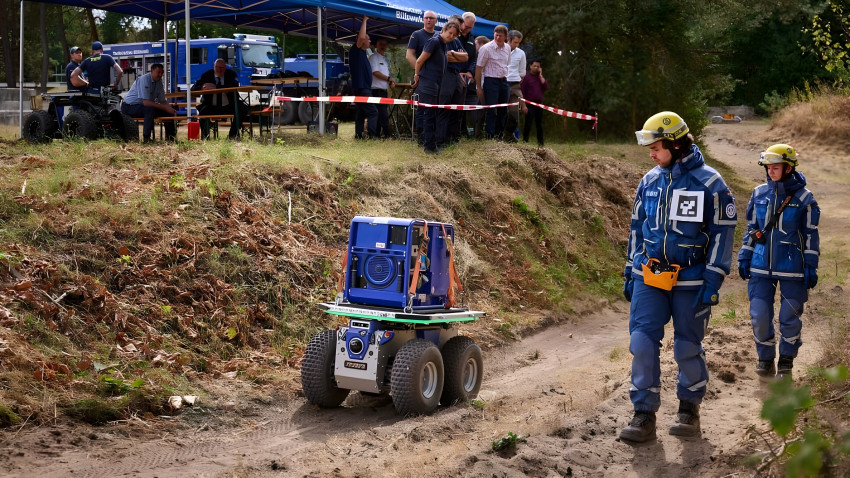
Simple instrument increases the accuracy of deep brain stimulation
This week, mechanical engineer Marc Janssens will be awarded a PhD by the Eindhoven University of Technology (TU/e) for the design of a relatively simple, purely mechanical instrument that considerably improves the accuracy of positioning electrodes for deep brain stimulation. The instrument allows neurosurgeons with less experience to perform the operation, so in theory it could reduce waiting lists.
Patients with Parkinson's disease have been treated with deep brain stimulation (DBS) since the 1990s. It involves inserting two electrodes deep into the brain, to an area called the subthalamic nucleus (see figure below), which has a size of about 8 x 4 x 5 mm. The electrodes are connected to a kind of pacemaker, which is usually implanted in the chest under the collarbone.
This generator delivers a series of electrical pulses to the electrodes at various intervals, depending on the patient. If this treatment is successful, the shaking and uncontrolled movements of patients with Parkinson's are significantly suppressed, improving the lives of patients considerably.
This video explains how it works:
Precision work
The problem with the existing procedure for inserting electrodes is its relative inaccuracy. The electrodes are inserted in the brain tissue with an inaccuracy of a few millimetres, which is very large considering the limited dimensions of the subthalamic nucleus being targeted. The electrodes are supposed to end up in the part of the brain which controls movement. Any incorrect positioning can disrupt the regions associated with emotions and learning processes.

Source: Wikipedia / CC BY-SA 3.0
In the existing procedure, the doctor first makes an MRI scan to determine exactly where the target area is located in the brain. A frame is then fitted to the patient’s head, after which the doctor makes a CT scan (a three-dimensional X-ray) to determine how the head is positioned in relation to the frame. The third step is to superimpose the two images to determine where the target is in relation to the frame. This is where a considerable margin of error of up to several millimetres creeps into the procedure.
Mechanical engineer Marc Janssens is now trying to introduce improvements in this respect, with his design for a new instrument for inserting the electrodes. The device consists of two parts. The larger part is an instrument which inserts an electrode very accurately into the brain. The second, smaller part is an adapter disk which is screwed into the patient's head.
Reference point
The crucial element of Janssens' solution, establishing a fixed reference point, is achieved by attaching the adapter disk to the back of the patient’s head with three surgical screws. According to the maker, this is less painful than the existing frame, which is clamped to the head with four pins. The disk ensures that no additional error is introduced when the patient is moved from the MRI scan area to the treatment table.
The new procedure still includes an MRI scan, but the patient can then be moved straight to the treatment table, where the surgeon clicks the adapter disc into the new instrument that positions the electrodes for insertion (see photo below). The key point is that the patient carries the fixed reference point, the adapter disk, reducing the inaccuracy of the placement of the electrodes to a millimetre or less.

Shorter waiting lists
The improved accuracy of the new instrument means brain surgeons with little or infrequent practice with the intervention can also carry out the surgery. In principle, this could mean that the currently long waiting lists for treatment could be reduced.
The increased accuracy also makes the procedure less unpleasant for the patient. In the current procedure, the patient has to remain conscious during the operation, because the surgeon needs to assess the patient’s reaction to determine if the electrodes are in the right place. The increased accuracy of the new approach means that the patient can be anesthetised.
Manual operation
One noticeable detail of the solution designed by Janssens is that it uses no electronics at all, and the instrument is operated completely by hand. That may sound old-fashioned, but the makers emphasize that the instrument is reliable, light, compact and cheap.
Janssens' PhD research has resulted in a working prototype; the company Eindhoven Medical Robotics hopes to further develop the instrument and bring it to the market.
If you found this article interesting, subscribe for free to our weekly newsletter!
Opening photo: Marc Janssens with his instrument for inserting deep brain stimulation electrodes Photo: Bart van Overbeeke / TU/e







